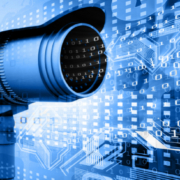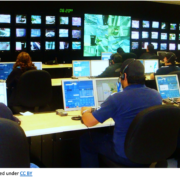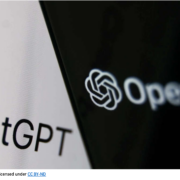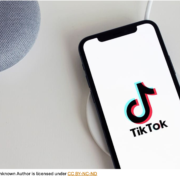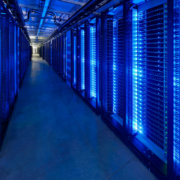By CHHS Extern Alexandra Barczak
U.S. lawmakers have introduced legislation called the Banning Surveillance Advertising Act, designed to prohibit advertisers and advertising facilitators, such as Google and Facebook, from using personal data to create targeted advertisements, with the exception of broad location targeting. It further protects against advertisers using a protected class of information, such as race, gender, and religion, and personal data purchased from data brokers, by prohibiting advertisers from targeting ads based on this information. Enforcement would be through state attorneys general, private lawsuits, and the Federal Trade Commission. However, in the age of Big Tech, is this actually feasible?
Big Tech, a term coined to mean the major players in the technological world, often indicates the “Big Five” which hold the most influence in the technological market: Amazon, Apple, Facebook/Meta, Google/Alphabet, and Microsoft. While each of the Big Five has a sphere that they dominate, such as Facebook with social media, Google with a search engine, and Apple with communication devices like mobile phones and laptops, there is a common thread amongst them all – they are constantly using our data, whether that be through asking for it, tracking it on their own, or buying it from another company/data broker. Our online movements are continuously being monitored under the guise of better serving the users, with typical collection including information such as your name, email, phone number, IP address, device you are using, times you are using your device, what you are doing while on your device, location, and more. Having this data allows these companies to better predict user behavior by using it to build a profile based on past user movements to anticipate future movements by giving you the content you want to see, showing you relevant ads, personalizing your experience, etc. Such pervasive collection and tracking have thus coined the term “surveillance.”
To many, this may not be a threatening prospect, but to others, online tracking is highly concerning. As the reasoning behind the Banning Surveillance Advertising Act points out, “Personal data is abused to target ads with major societal harms, including voter suppression, racist housing discrimination, sexist employment exclusions, political manipulation, and threats to national security. Surveillance advertising also invades privacy and threaten civil liberties, such as by tracking which place of worship individuals attend and whether they participated in protests and then selling this information to advertisers.” It is even more troubling that this sacrifice in personal privacy and security is done simply for the financial gain of these already profitable giants.
The Banning Surveillance Advertising Act is notably introduced exclusively by Democrats (Representatives Anna G. Eshoo (D-CA) and Jan Schakowsky (D-IL) and Senators Ron Wyden (D-OR) and Cory Booker (D-NJ)) and is said to be supported by leading public interest organizations, academics, and companies with privacy-preserving business models. Some of those cited in support include the Center for Digital Democracy, Accountable Tech, Fight for the Future, Anti-Defamation League, and Ekō. While there seems to be strength in support, there is likely equal, if not more, strength in opposition. Big Tech itself has created monopolies in their respective fields, with use of their products and systems becoming a necessity in everyday life. This power has created concern amongst the general population and the government of what exactly Big Tech can accomplish. Such dominating digital infrastructures have the capability to influence societies, economics, national security, and politics, just as Big Oil, Big Banks, or Big Pharma did in the past and arguably still do. Thus, it is entirely plausible that the resources of Big Tech will be used against this bill. It would not be the first time. For example, in 2022, lobbyists on behalf of Amazon, Apple, Meta, and Google parent company Alphabet spent millions opposing two antitrust bipartisan bills targeting Big Tech, the Open App Markets Act and the American Innovation Choice Online Act. Though the response to a bill about advertising may not be as extreme as the response to antitrust regulation, Big Tech would still likely involve itself and its resources in advocating against passing such legislation. Money talks, and Big Tech has money to spare – money which will be directed at the individuals and organizations that will lobby to block activity that will interfere with their business models; business models which all include targeted advertising as a source of revenue.
While the introduction of this bill could be considered a step in the right direction to preserving our online privacy, it also serves as a reminder that digital privacy, though a hot topic, is becoming increasingly politicized with little concrete movement at the federal level. Just note how long it has taken for a bipartisan federal privacy law to be introduced – and that, the American Data Privacy Protection Act, still did not pass. This is already the second attempt at the introduction of the Banning Surveillance Advertising Act. In January 2022, Congresswoman Eshoo (D-CA), Congresswoman Schakowsky (D-Ill.), and Senator Booker (D-NJ), introduced a similar bill with the same title which was unsuccessful. In both the House and Senate, the bill never got past the introduction stage. The House referred it to the Subcommittee on Consumer Protection and Commerce with no further movement, and the Senate read it twice and referred it to the Committee on Commerce, Science, and Transportation with no further movement.
With the power Big Tech holds across society and politics, the bill, which threatens a revenue stream for these organizations, will likely face strong resistance, backed with deep pockets. To realistically have a chance at gaining any traction, a bipartisan push would have to be made with representatives and organizations from all political parties making this an issue to care about. It, therefore, seems like there will be a long road ahead for the Banning Surveillance Advertising Act.


